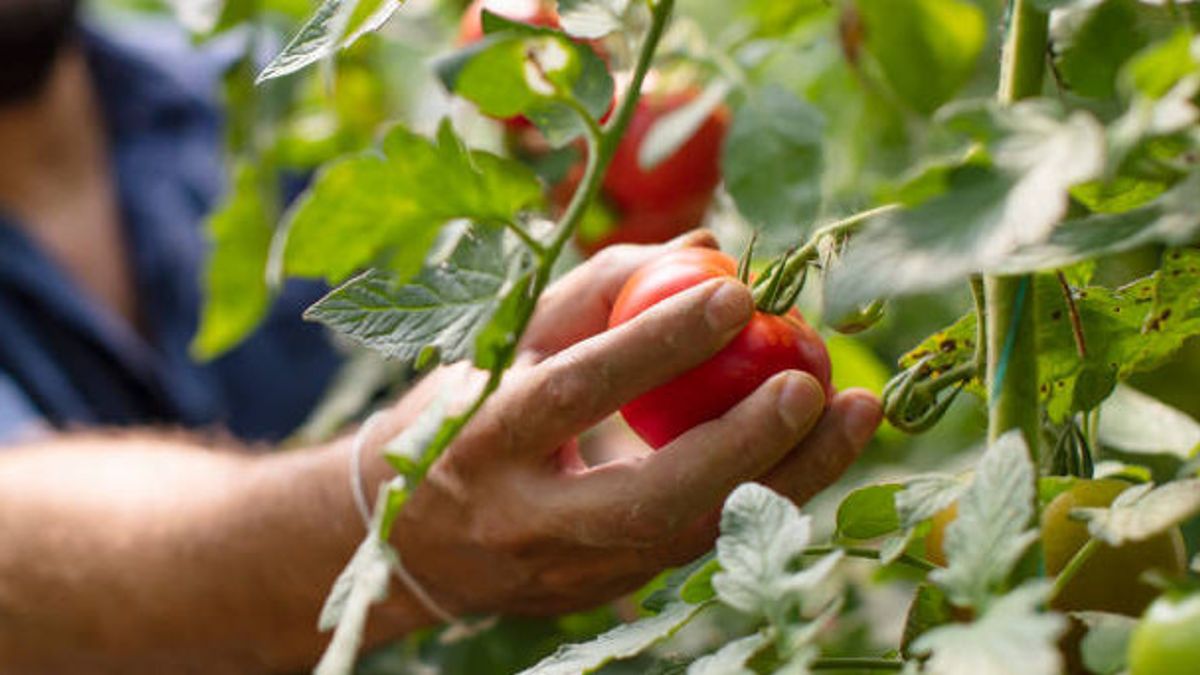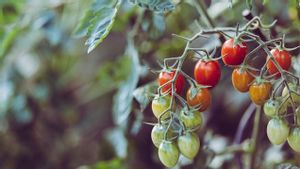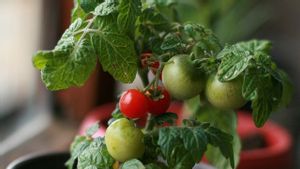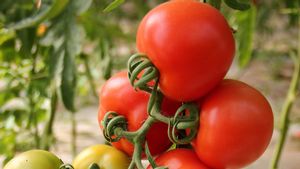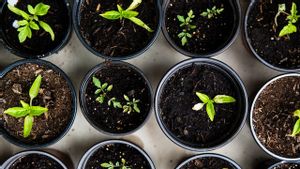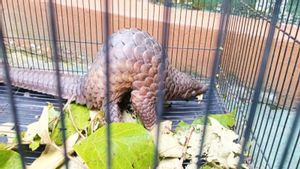Tomatoes are one of the most popular plants planted by plant lovers. These plants are also often attacked by pests and diseases caused by fungal or bacterial infections. If your tomato leaf has white spots, it can indicate that your tomato plant is stressed and has difficulty growing.
There are various reasons why there are white spots on the leaves of the tomatoes plant and it is important to determine the root cause so that they can treat the problem properly.
The following are the most common diseases and pests that can be the cause, as well as how to deal with being driven by VOI from The Spruce, Monday, July 29.
Tomato plants don't like stagnant water on their leaves. If you live in a warm climate and a heavy rainy season arrives, this can cause fungal diseases called flour dew. This is one of the most widespread plant diseases and is easily recognized. As the name suggests, dew is characterized by spots or white spots such as flour commonly found on the upper side of the leaves.
Fortunately, dew is rarely fatal to tomato plants, although it can affect their health. To treat flour dew, get rid of the affected leaves and cut down the tomato plant to increase air circulation. You can use fungicides, look for ones that contain potassium bicarbonates, lime, sulfur, or copper oils. For prevention, spray your tomato plant directly on the ground surface. Avoid wetting the leaves or fruit.
Nutrition deficiency often appears in the leaves of tomatoes plants. If there are spots on dark leaves yellowing or whitening, this could indicate a lack of nitrogen, phosphorus, calcium, or magnesium in the soil.
For quick repairs, give a seaweed liquid fertilizer. Disburse one bottle cap in a sprinkler can and apply it to the leaves once a week. To determine the actual lack of nutrients in the ground, you should do a soil test.
This disease has the potential to be damaging and can attack a number of plants, including potatoes and tomatoes. This fungal disease can attack leaves, stems, and tomatoes. One of the early symptoms of patchy disease isence leaves and is overgrown with white fungus at the bottom. This disease is more common in tomatoes grown outdoors. Tomato plants grown in greenhouses are rarely exposed to this disease.
If it's not too severe, get rid of all the tomatoes that are disease-affected and clean all garden equipment that may come into contact with plants to prevent disease transmission. To make sure it's completely gone, the best option is to remove plants and apply fungicides to the area. Rotate your plants and plant tomatoes in different areas next year to prevent them from returning, as leaf rotary diseases can survive during winter in the remains of plants and in the ground.
Tomato plants need heat and sunlight to produce fruit, but too much sunlight can cause tomatoes and leaves to burn. Known as a sunscale, this happens when plants are exposed to direct sunlight during hot weather, and both fruit and leaves can be affected. Sunscaled on tomato plants can appear as white spots or brown spots on the leaves.
The best way to deal with sunscaled is to prevent it from happening from the start. Indeed, tomato plants can help increase fruit growth, but can also make plants exposed to too much sunlight. Make sure you don't do it too much. If weather forecasts show very hot weather, put on a shaded cloth to protect plants.
Whitebugs are annoying pests for all ornamental plant owners, but whitebugs are also common pests on outdoor plants. If not treated, the infected plant can die.
You can deal with small whitebugs by spraying water from the garden hose. For a wider problem, spray tomatoes leaves with lime oil, which won't affect bees. You can also dip cotton into alcohol brush and wipe leaves directly to kill whitebugs.
Deposits of mineral salt and fertilizer in tomato plants usually appear as residues of white crystals on the leaves. Salt buildup can be caused by sprinkling plants with Sadah water with high amounts of calcium carbonate, sodium, and/or iron content. Watering tomato plants with high salt concentrations will cause imbalance in plants. Which causes it to grow inappropriately or die.
The best way to overcome salt buildup is to dissolve or rinse the plant's root zone. First, the water test that you use to water plants to ensure the water is low in ion. Then, provide relatively large amounts of water to help dissolve salt buildup in the ground.
SEE ALSO:
The common disease of attacking tomato plants is the mosaic tomato virus (ToMV), a plant pathogenic virus found worldwide. This virus can cause plant leaves to show speckled areas, yellowish-whiteness with a limp-like appearance. This virus can spread easily, including in contaminated clothing and equipment.
Controlling the mosaic virus of tomatoes can be difficult, and there is no cure after the plant is infected. If you believe the tomato plant is infected, immediately remove it from the garden and burn it or throw it away. Monitor other plants to make sure the virus does not spread.
The English, Chinese, Japanese, Arabic, and French versions are automatically generated by the AI. So there may still be inaccuracies in translating, please always see Indonesian as our main language. (system supported by DigitalSiber.id)
